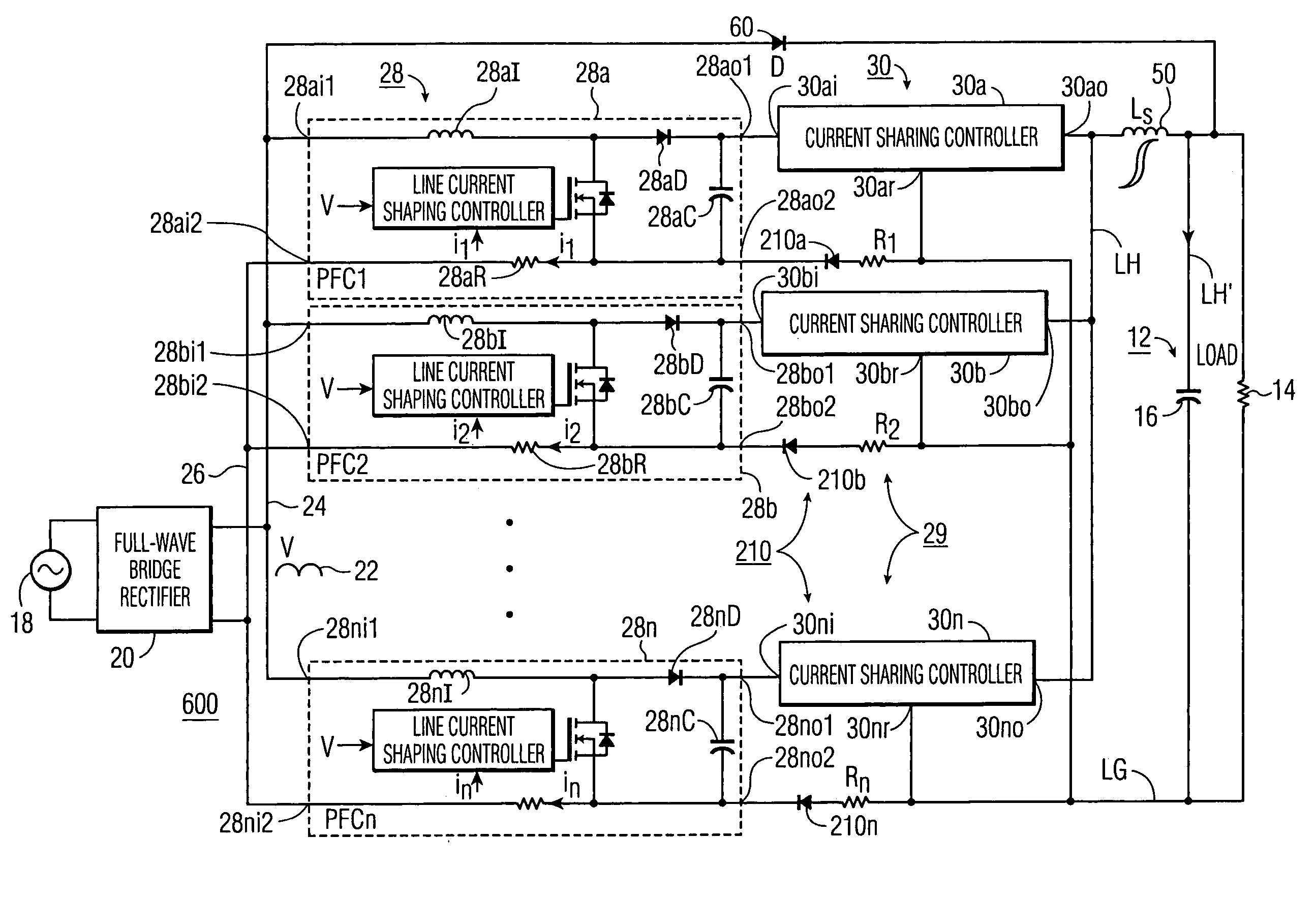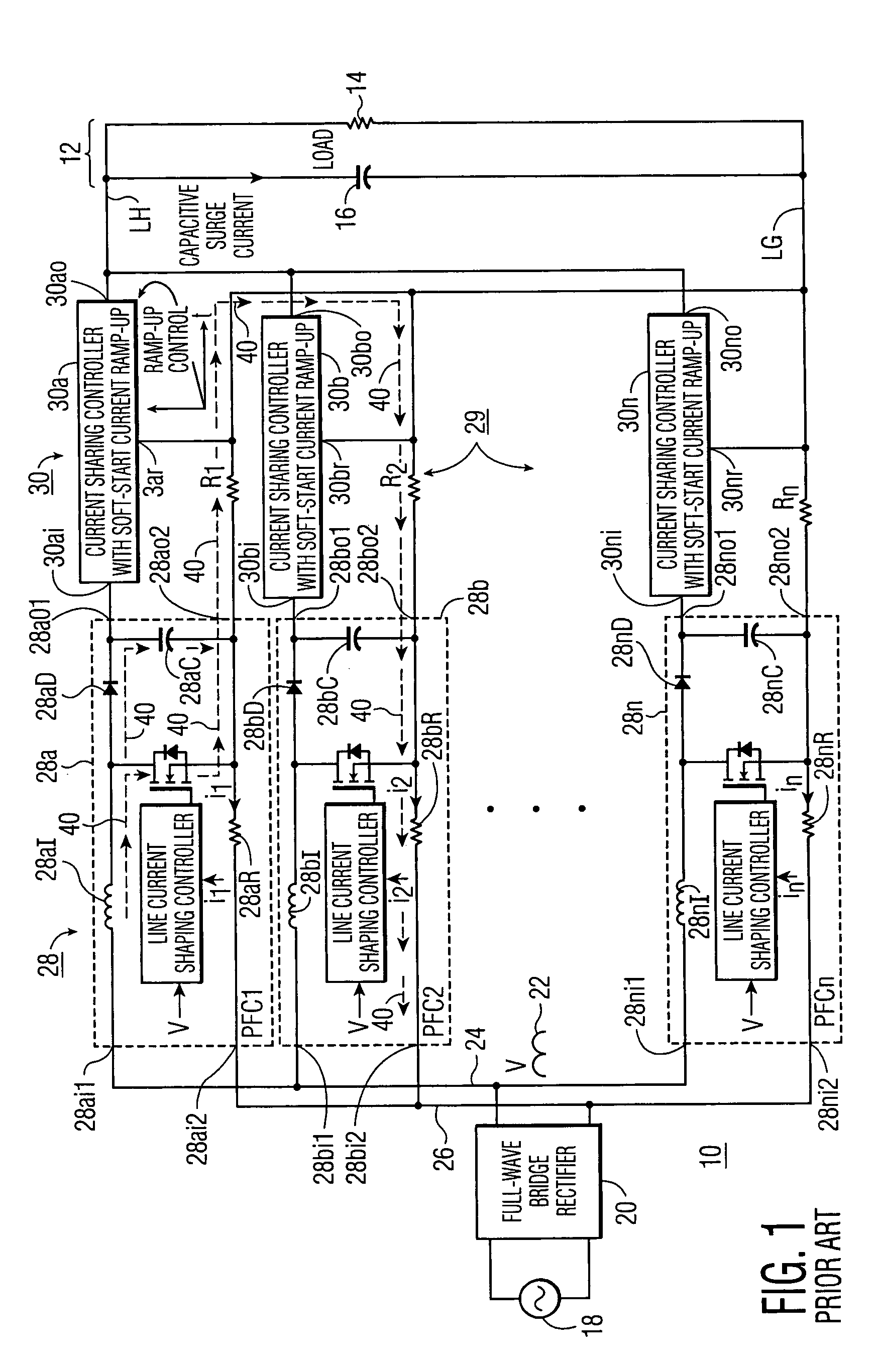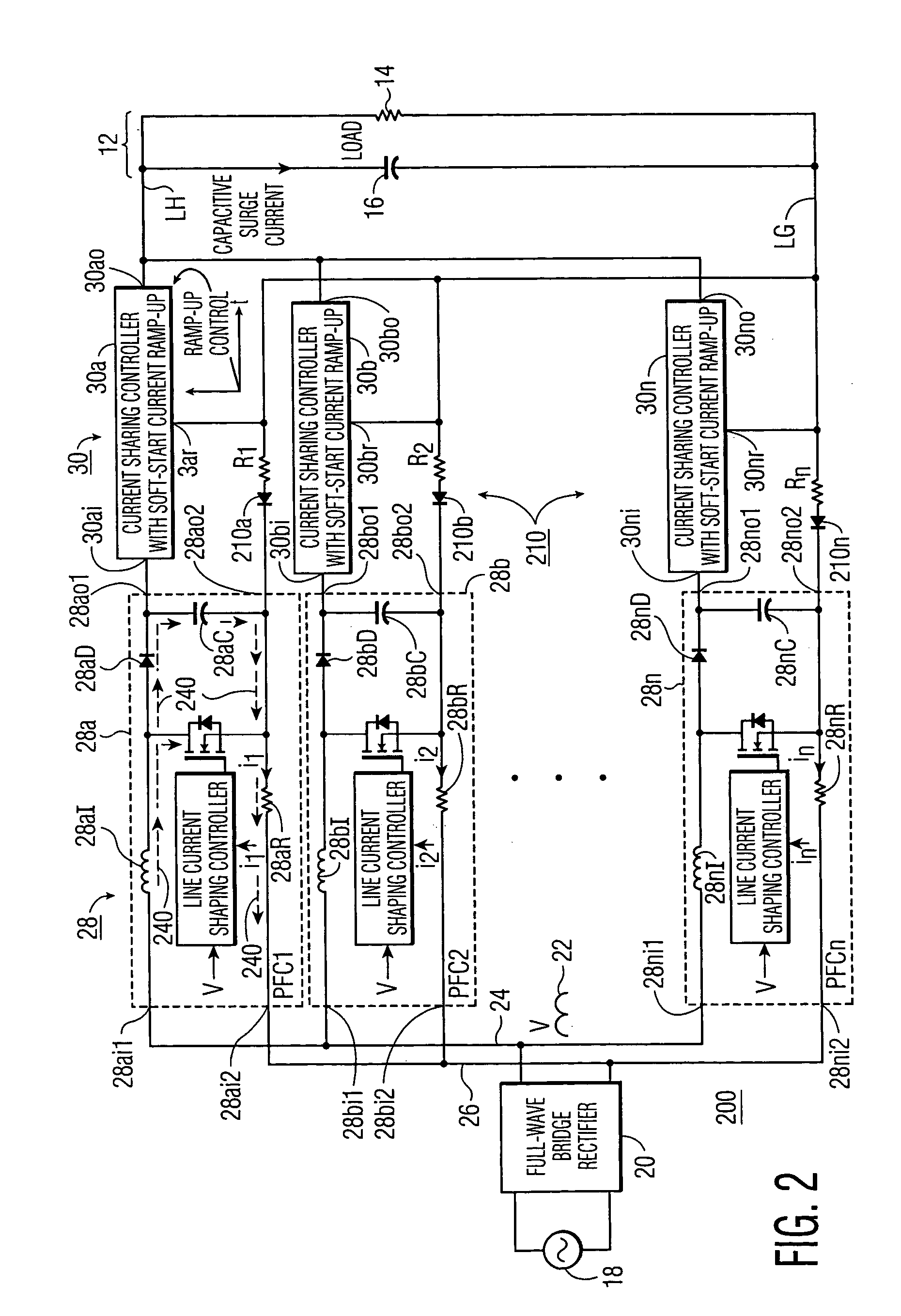Surge current suppression in power-factor-corrected AC-to-DC converter with capacitive load
a capacitive load and surge current technology, applied in the field of parallel power supplies, can solve the problems of internal impedance and internal impedance of the various power supplies
- Summary
- Abstract
- Description
- Claims
- Application Information
AI Technical Summary
Benefits of technology
Problems solved by technology
Method used
Image
Examples
Embodiment Construction
[0021]It has been discovered that the arrangement of FIG. 1 may not be as stable or consistent in performance as desired. More particularly, it has been discovered that a forward cross circulation current, represented in FIG. 1 as a dash line 40, can flow from one PFC module to another, as for example from PFC module 28a to PFC module 28b, returning to conductor 26. This cross circulation current tends to disrupt the current sensing mechanism of the affected module, and eventually the AC line current shaping. In addition, the uncontrolled circulation may easily exceed the rating of the current-balancing resistors of the PFC modules, such as resistor 28bR of module 28b, for example, and lead to component destruction. Further, the cross circulation current also causes signal ground drift (reference shift) and erroneous signal processing.
[0022]Circulation of cross currents from one module to the others is prevented by the use of unidirectional current conducting devices such as rectifi...
PUM
 Login to View More
Login to View More Abstract
Description
Claims
Application Information
 Login to View More
Login to View More - R&D
- Intellectual Property
- Life Sciences
- Materials
- Tech Scout
- Unparalleled Data Quality
- Higher Quality Content
- 60% Fewer Hallucinations
Browse by: Latest US Patents, China's latest patents, Technical Efficacy Thesaurus, Application Domain, Technology Topic, Popular Technical Reports.
© 2025 PatSnap. All rights reserved.Legal|Privacy policy|Modern Slavery Act Transparency Statement|Sitemap|About US| Contact US: help@patsnap.com



